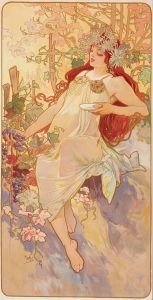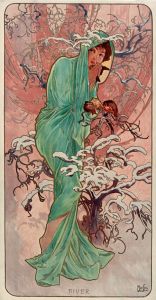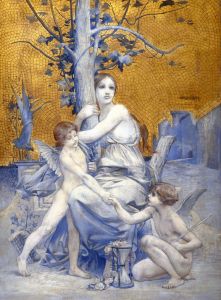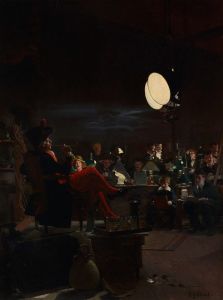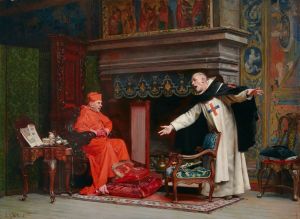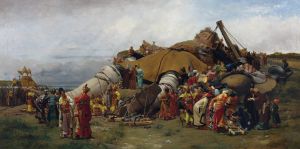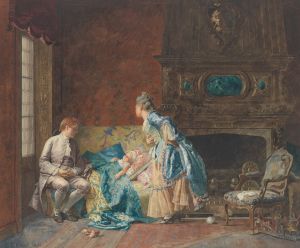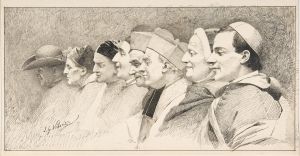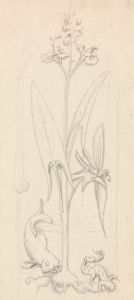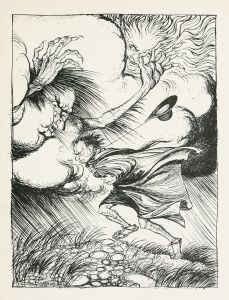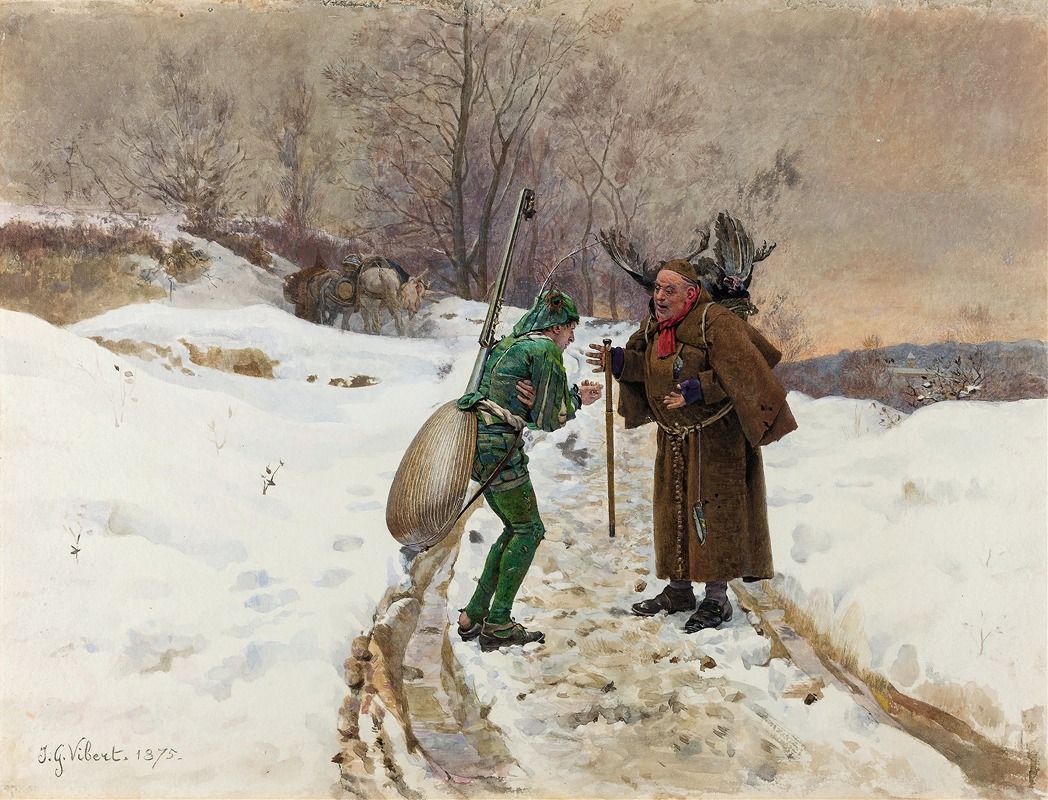
The Ant and the Grasshopper
A hand-painted replica of Jehan Georges Vibert’s masterpiece The Ant and the Grasshopper, meticulously crafted by professional artists to capture the true essence of the original. Each piece is created with museum-quality canvas and rare mineral pigments, carefully painted by experienced artists with delicate brushstrokes and rich, layered colors to perfectly recreate the texture of the original artwork. Unlike machine-printed reproductions, this hand-painted version brings the painting to life, infused with the artist’s emotions and skill in every stroke. Whether for personal collection or home decoration, it instantly elevates the artistic atmosphere of any space.
Jehan Georges Vibert (1840–1902) was a French academic painter known for his satirical and often humorous works, frequently depicting clergy and religious themes. One of his notable paintings, The Ant and the Grasshopper, is inspired by the classic fable of the same name attributed to Aesop. The fable contrasts the industrious ant, who works hard to prepare for the future, with the carefree grasshopper, who spends its time enjoying life without concern for what lies ahead.
In Vibert's interpretation, the painting reflects his characteristic style of blending narrative storytelling with meticulous attention to detail. The artwork portrays the moral lesson of the fable, emphasizing the virtues of hard work and foresight. Vibert's skill in capturing textures, expressions, and the interplay of light and shadow is evident in this piece, as in much of his oeuvre.
While Vibert's works were widely appreciated during his lifetime, he was also known for his ability to infuse his paintings with subtle humor and critique, often targeting societal norms or institutions. This approach is consistent with the themes of The Ant and the Grasshopper, which inherently carries a moralistic tone.
Specific details about the creation date, dimensions, or current location of The Ant and the Grasshopper are not readily available in historical records. However, Vibert's works are held in various private collections and museums, and his legacy remains significant in the context of 19th-century French academic art.
If additional information about this particular painting becomes available, it could provide further insight into Vibert's interpretation of the fable and its reception during his time.






